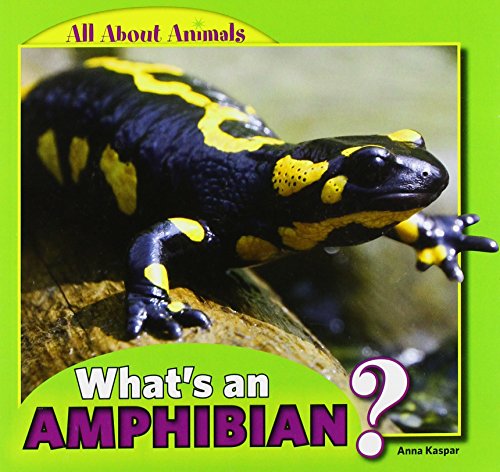-
Animals Finding Food
Wendy Perkins
Paperback (Capstone Press, Jan. 1, 2004)Explains the varied ways in which such animals as sea otters, zebras, and the yellow tang fish find their food. L
L
-
Ocean, Grades 1 - 2
Brighter Child
Paperback (Brighter Child, May 28, 2013)Get ready to learn all about the ocean! The fun and interactive pages in Learn About The Ocean entertain your child while simultaneously teaching basic skills. Topics include recognizing letters and numbers, classifying ocean animals, and identifying same L
L
-
The Most Adorable Animals in the World
Tammy Gagne
Paperback (Capstone Press, Jan. 1, 2015)Who doesn't love cute and cuddly animals? Give readers the details about the most adorable animals in the world, including their ranges, habitats, appearances, and behaviors. Large, colorful photos entice young readers while fact boxes support the text. N
N
-
What's a Fish?
Anna Kaspar
Paperback (Powerkids Pr, Aug. 15, 2012)We think of all fish as water-dwelling, but some fish are capable of traveling by land as well. Then there are some traits that all fish do havesuch as gills and scales. This incisive volume offers kids a great introduction to the many species of fish that inhabit our oceans, seas, bays, rivers, stream, lakes, ponds, and other bodies of water. Young readers will even learn about the difference between ocean water and fresh water. The gorgeous photographs of fish of many species will charm readers. M
M
-
How Animals Move
Pamela Jain Dell
Library Binding (Capstone Press, Sept. 1, 2004)Discusses the various methods and reasons for animal movement. Some of the animals shown include the spider monkey, the cheetah, a grasshopper, and the bald eagle. L
L
-
How Animals Move
Pamela Jain Dell
Paperback (Capstone Press, Sept. 1, 2004)Discusses the various methods and reasons for animal movement. Some of the animals shown include the spider monkey, the cheetah, a grasshopper, and the bald eagle. L
L
-
What's a Reptile?
Anna Kaspar
Paperback (Powerkids Pr, Aug. 15, 2012)Whether they love them or loathe them, kids tend to have a visceral reaction to snakes, lizards, alligators, and other members of the reptile family. This easy-to-read book explains the traits that all reptiles share, such as breathing air and having scales. It also offers fun facts about species of particular interest, including the massive saltwater crocodile and the desert-dwelling Gila monster. M
M
-
What's an Amphibian?
Anna Kaspar
Paperback (Powerkids Pr, Aug. 15, 2012)Introduces the world of amphibians, and discusses their anatomy, the changes they undergo, and different types of amphibian that live in different parts of the world. D
D
-
Animals Sleeping
Wendy Perkins
Library Binding (Capstone Press, Jan. 1, 2004)Perkins, Wendy L
L
-
Animals Raising Offspring
Wendy Perkins
Paperback (Capstone Press, Jan. 1, 2004)Explains the varied ways in which such animals as cheetahs, kangaroos, gray whales, and woodpeckers take care of their young. L
L
-
Learn About: Pyramids
Dr. Mellet
Hardcover (Anness, Oct. 14, 2008)Learn About Pyramids lets you step inside these structures and unlock all sorts of fascinating secrets about these extraordinary tombs and the lives of the people who made them. Take a journey from the fertile River Nile in Egypt to the floating island of Tenochtitlan in Mexico to discover just how many different types of pyramids there have been over the centuries. Learn about pyramid wonders of the modern world, find out which pyramid shapes occur in nature and explore how pyramid shapes have all kinds of unique properties and uses. T
T
-
Animals Staying Safe
Xavier W. Niz
Library Binding (Capstone Press, Sept. 1, 2004)Discusses the ways that animals defend and protect themselves from danger. Some of the animals shown include a skunk, a gray tree frog, a polyphemus moth, and an octopus. L
L